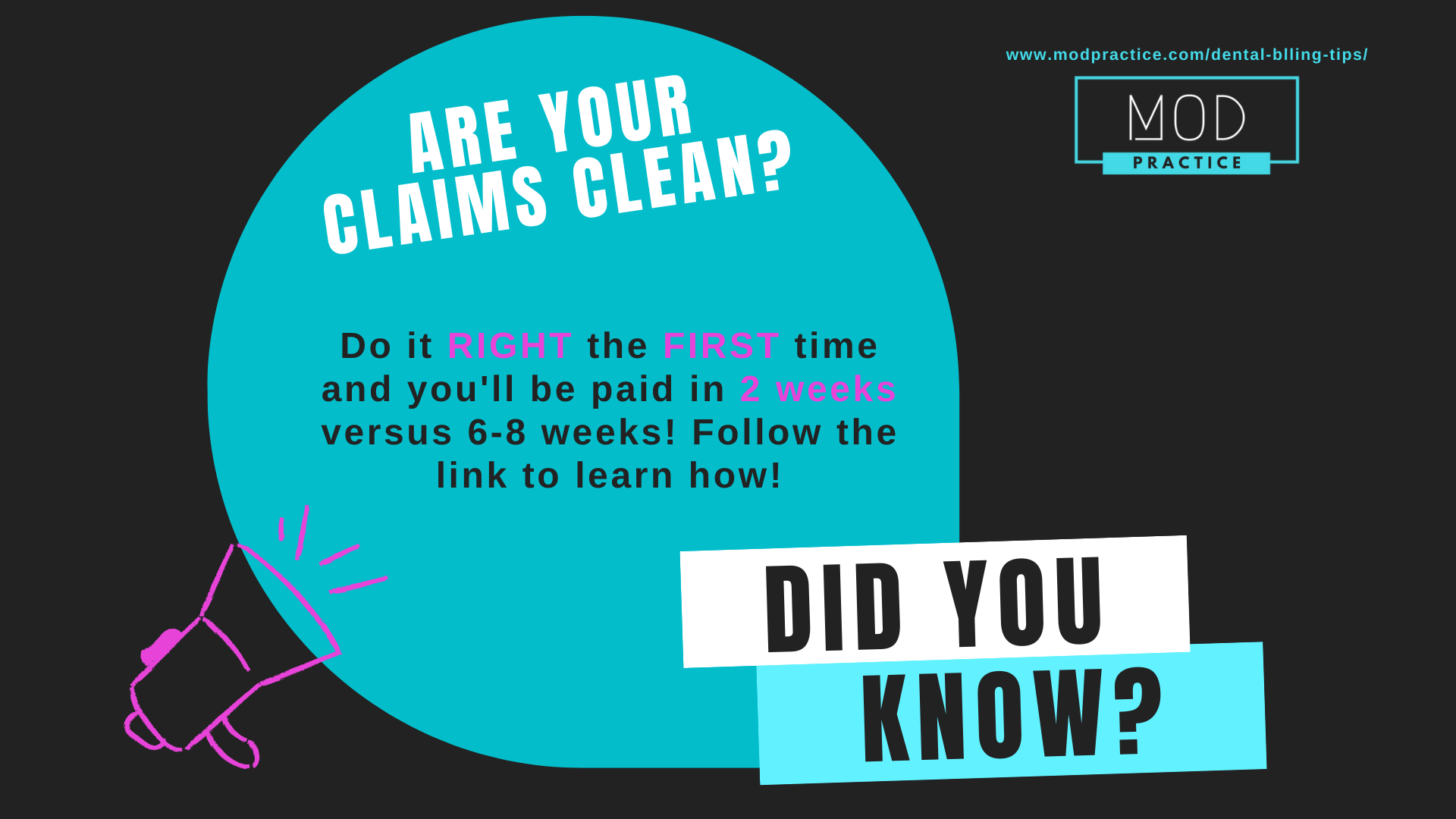Welcome to Tuesday Tips with MODPractice!
ARE YOUR CLAIMS CLEAN?
Did you know that a clean claim will usually be paid by most major payers in 2 weeks or less versus 6-8 weeks for a claim that requires additional information or requires correction?
So what exactly does the term “clean claim” mean? I’m glad you asked!
A “clean claim” means a claim that does all of the following:
- Identifies the health professional, health facility, home health care provider, or durable medical equipment provider that provided service sufficiently to verify, if necessary, affiliation status and includes any identifying numbers.
- Sufficiently identifies the patient and health plan subscriber.
- Lists the date and place of service.
- Is a claim for covered services for an eligible individual.
- If necessary, substantiates the medical necessity and appropriateness of the service provided.
- If prior authorization is required for certain patient services, contains information sufficient to establish that prior authorization was obtained.
- Identifies the service rendered using a generally accepted system of procedure or service coding.
- Includes additional documentation based upon services rendered as reasonably required by the health plan.
Let’s apply this to your day to day operations!
Here’s a very common scenario:
Your patient is scheduled for a D2392 on #13. When prepping the restoration, the prep extends to the buccal groove so the restoration becomes a D2393. Somehow, that change does not get communicated to the front desk and the patient’s claim is submitted with the original D2392 code. At this point, you have 2 choices: write off the difference as it’s your mistake or send a corrected claim with a narrative detailing the discrepancy. Those corrected claims take at least 4 weeks to be reviewed so you just went from that claim being paid in 2 weeks or less to spending double or even triple the staff time to get that claim paid in 6-8 weeks now.
How could we improve this process:
1 – Decide where the update and change is made and how you communicate this in your office. Does the doctor or assistant update the procedure code? Do you have your front desk update the procedure code on walk out? Ultimately, there needs to be communication between the back office and front office
2 – The team member submitting claims always checks the patient’s chart notes to ensure the correct procedure was walked out and is being submitted.
MODPractice recommends both actions. Ultimately, communication between the front and back office is critical not only to account receivables but also to the patient experience. Having a checks and balances system in place to double check claims for correct information before they are submitted will ensure that just in case #1 didn’t happen, #2 will catch the discrepancy.
So, what does your team member actually need to check when sending claims to batch?
1. Procedure Codes, surfaces, etc
2. Supporting Documentation (are the appropriate x-rays, narratives, periodontal charting, predetermination, and/or dates included
3. Assignment of Benefits
4. If you have multiple doctors, check the Provider/NPI/License/TID info
Want to learn more Access the full ADA instruction guide here:
Interested in learning more about Revenue Cycle Management for your practice? Contact us today!

